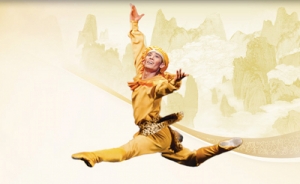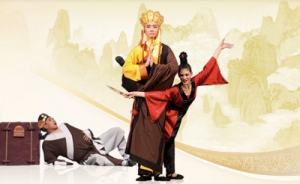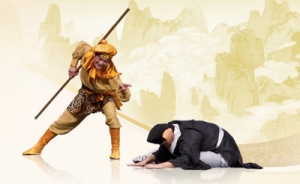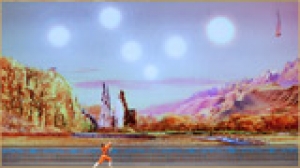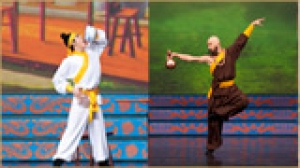Journey to the West
Journey to the West is one of the four classics of Chinese literature. Written by the Ming Dynasty novelist Wu Cheng’en during the 16th century, this beloved adventure tale combines action, humor, and spiritual lessons.
The novel takes place in the seventh century. It tells the story of one of Buddha Sakyamuni’s disciples who was banished from the heavenly paradise for the crime of slighting the Buddha Law. He was sent to the human world and forced to spend ten lifetimes practicing religious self-cultivation in order to atone for his sins.
In his tenth lifetime, now during the Tang Dynasty, he reincarnates as a monk named Xuan Zang (also known as Tang Monk and Tripitaka). The emperor wishes this monk can travel west and bring holy Mahayana Buddhist scriptures back to China. After being inspired by a vision from the Bodhisattva Guanyin, the monk accepts the mission and sets off on the sacred quest.
Tang Monk and His Three Disciples
But Tang Monk is ill-equipped for such perilous travel on his own. Weak and timid, he is no match for the evil creatures seeking to kill and eat him (his flesh, after all, is said to impart immortality). And so the goddess Guanyin arranges for an eclectic group to become his disciples and protect him: the valiant but impetuous Monkey King (also known as Sun Wukong), the lustful Pigsy, the taciturn Sand Monk, and the White Dragon Horse. All had been banished to the human world for sins in the heavens. Out of mercy, Guanyin gives them one more chance to return to their celestial home: They can convert to Buddhism and protect the monk Tang on his pilgrimage.
And indeed, on the journey they encounter one trial after another—a total of 81, to be precise. Through force or deception, a motley of demons and evil spirits come after the monk. Some try to tempt the band with wealth or beauty. Yet, in the end, the pious pilgrims triumph, they return to China with sacred scriptures, and return to their rightful places in the heavens.
Journey to the West is known for its colorful characters, especially the Monkey King and Pigsy. The Monkey King was born out of a rock, and learned supernormal powers from a Taoist master. With the combination of his mischievous nature and great powers, he created chaos both in heaven and the underworld. The heavenly Jade Emperor tried to calm him down by granting him the title of “Great Sage of Heaven,” but Monkey could not control himself and caused uproar in the heavenly palace.
Finally, the Buddha, still far more powerful, subdued the rascally Monkey and trapped him under a mountain. There he remained trapped for 500 years, until one day Tang Monk passed by the mountain. This was the moment the Monkey King had been waiting for. He vowed to devote himself to the monk’s service on the journey and was finally freed.
The Monkey King proved a critical asset to the monk. He could see right through the demons and their witchcraft, and was not tempted by beauty or riches. His wit helped the monk escape many a perilous situation. And although he proved unruly at times, for his great accomplishments he was later awarded the title of “Buddha Victorious in Strife.”
Pigsy had likewise once been a deity—a heavenly admiral, in fact. But after getting drunk and making inappropriate moves toward the beautiful Chang’e, he was sent down to the human world as a man pig. Pigsy was known for being lazy and gluttonous, and worst of all, licentious. Even after ten years of spiritual self-cultivation on his pilgrimage, Pigsy was still unwilling to let go of these desires, and so, upon completing the mission, he was only given the lowly title of “heavenly altar messenger.”
Indeed in this novel so rich in symbolism, the tribulations the travelers face are metaphors for the trials one must pass on a spiritual journey.
July 27, 2011


